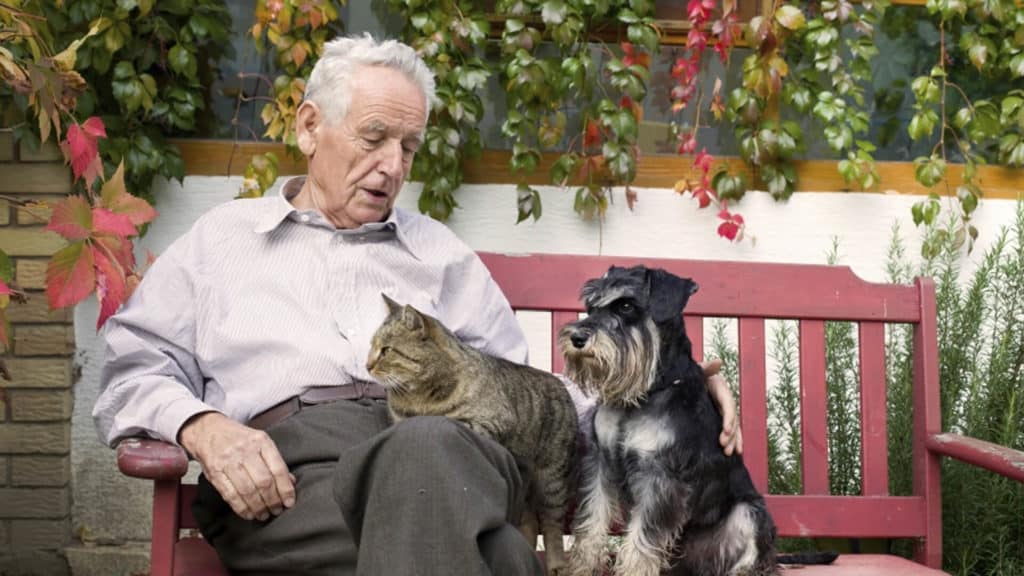Dogs will listen with seemingly endless patience. They will love unconditionally, and they’ll gladly join you for a brisk walk around the block. Is it any wonder scientists are touting canine companionship as a lifestyle enhancer?
For older people, a dog can bring a sense of calm and a feeling of camaraderie, while at the same time offering motivation to spur physical activity. As researchers prove out what many already suspect—that a dog can be an older adult’s best friend—progressive senior living communities are increasingly making room for dogs as part of a rich and full resident experience.
Why dogs? Research suggests a number of reasons.
Physical activity ranks high among the drivers of senior wellness, and a canine pal can give Mom or Dad a reason to get up and go. The Centers for Disease Control and Prevention advises adults to engage in 150 or more minutes of moderate physical activity per week. Seniors prefer walking because it’s gentle and self-paced and doesn’t require equipment.
As a result, University of Missouri researchers have found that dog-walking brings a range of physical benefits. It is associated with lower body mass index and fewer doctor visits, for example. “These results can provide the basis for medical professionals to recommend pet ownership for older adults and can be translated into reduced health care expenditures for the aging population,” researchers report.
In a 2010 study, scientists found that older adults who walked with shelter dogs improved their normal walking speed and distance. Dogs gave folks motivation to walk and explore, making them even likelier to go for a walk than those who walked with a human companion.
The American Heart Association likewise reports that pet owners have lower blood pressure, lower resting baseline heart rates, and faster recovery from stress.
Then there are the intangibles. “Dogs and other pets live very much in the here and now. They don’t worry about tomorrow. And tomorrow can be very scary for an older person. By having an animal with that sense of now, it tends to rub off on people,” says Dr. Jay P. Granat, a New Jersey psychotherapist.
As a result, dog ownership has been correlated to improved moods. For older adults in particular, the presence of a dog can help offset loneliness and isolation, potentially reducing depression.
Helpful Hints for Older Adults and Pets
For those seeking to bring a canine friend into a senior living community, it may be helpful to consider a number of factors. It may take some finesse to find the right dog for a given setting.
Breed – Dogs may vary widely by breed, and not every type of dog is right for every senior. The size and strength of the animal may become significant factors to consider, especially if an older person has health concerns or physical limitations. While all dogs can be trained for obedience, some breeds are thought to be inherently more or less social, a possible consideration for those looking to bring a dog into a communal setting.
Temperament – Every dog has a unique personality, a certain way of getting along in the world. Not every dog’s temperament will be suited to the needs and tastes of an older person, nor will every dog be a good fit for a senior community. It’s important to get to know a dog before making a long-term commitment: Spend some time and see how the animal interacts with the senior and with others nearby. While training can do much to shape a dog’s personality, it’s also possible to get a read on a dog’s basic character and to get a sense of how well this new friend might fit into one’s chosen lifestyle.
Age of the dog – A good predictor of temperament in dogs is age: The younger they are, the bouncier. That isn’t necessarily a bad thing. A high-energy pup can be a boon to a senior looking for a reason to log some serious distance on the walking trails. Still, a younger dog will inherently require more time, attention, and energy. Many older people will find that a more sedate companion makes for a more appropriate fit.
Community rules – While many senior living communities have opened their doors to canine companions, it’s important to know the rules before bringing a dog into the mix. Some communities may have restrictions around size or breed, for example.
For those willing to take the time and make a careful choice, the introduction of a dog into an older adult’s life can be a significant positive factor, offering better health, improved mood, and a renewed sense of purpose.




